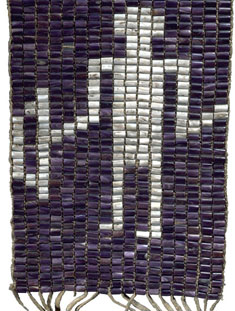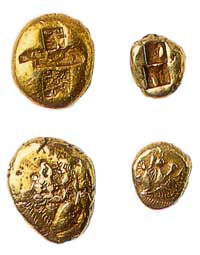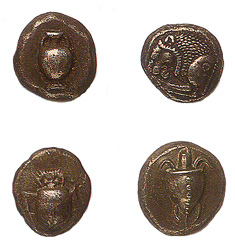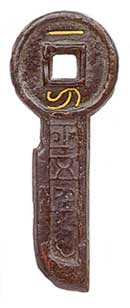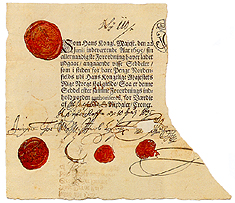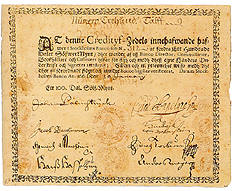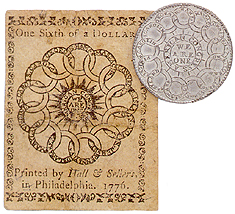COINS
What are coins?
Along with banknotes, coins are the official means by which
payment can be made for goods or services. Whatever the actual value of the
content of the coin, the government of the country concerned guarantees the
face value that it bears. Collectors differentiate between circulation coins
(which refer to normal coinage used in everyday life) and commemorative coins
(which are issued to commemorate special events or personalities).
Coins are pieces of money mostly made out of metal. They are
produced according to the size, weight, text and picture motif determined by
the issuing country or territory. Coin laws regulate the production of coins in
all countries and may designate the inscriptions or wording used or the
features used for security purposes.
Circulation coins are coins which are minted with the same
motif over many years and which are used for payment in everyday life. In
Britain these encompass all coins from 1 pence to 2 pounds, with only the year
date changing from year to year unless changes to the design or size are
introduced.
Commemorative coins are only minted with one specific year
date and tend to be issued for specific events. For example, they may honor
historic or actual events and personalities from politics, economy, sports and
culture. The London Mint Office offers a wide range of commemorative coins
issued to mark such events as the 2012 Diamond Jubilee or the 60th Anniversary
of the Coronation - click here for details. Commemorative coins are especially
popular with collectors.
A Short History of Money
 | | | | |
| | |  | Early Money |
| | | | Before there was money, as we know it, there was barter. People in early societies developed forms of proto-money -- the use of commodities that everyone agreed to accept in trade. Various items have been used by different societies at different times. Aztecs used cacao beans. Norwegians once used butter. The early U.S. colonists used tobacco leaves and animal hides (settlers traded deer hides -- the origin of our modern word for money: "bucks"). The people of Paraguay used snails. Roman soldiers were paid a "salarium" of salt. On the island of Nauru, the islanders used rats. Human slaves have also been used as currency around the world. Pictured here: a flint arrowhead. |
| | | | | |
| | | |
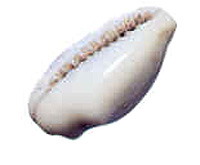 |
Symbolic Proto-Money
|  | | |
Early in pre-history, people made a fundamental shift in what they chose to use for proto-money. Some items, such as arrowheads, salt and animal hides, were useful in and of themselves. Gradually, however, people began exchanging items that had no intrinsic value, but which had only agreed-upon or symbolic value. An example is the cowrie shell. Cowrie shells are found on an island off the coast of India. They have been widely used as currency in China, India, Thailand and in West Africa (even as late as into the 1930s).
| | | |
| | | | | |
|
| | | | |
| | |  | More Symbolic Currency |
| | | | Another symbolic currency -- used widely in the Americas -- was wampum. Wampum are oblong clamshells sawed into beads, polished, and then strung together. Wampum was used as legal tender in several early American colonies and states. A wampum factory in New Jersey remained in business until 1859. From the widespread use of wampum as symbolic currency we get the current phrase "shelling out". |
| | | | | |
| | | | 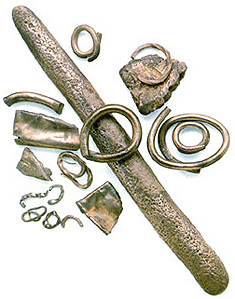 |
Egyptian Currency
|  | | |
The ancient Egyptians developed a system for making payments with weighed amounts of precious metal, such as the silver shown to the right, which were weighed on a balance with stone weights (below). Inscriptions on the weights were often made by officials to verify the accuracy of the measurement.
| | | |
| | | | | |
|
| | | | |
| | |  | 600 B.C. The First Coins |
| | | | Coins are pieces of metal marked with designs that indicates they are money. The earliest coins were made in the Kingdom of Lydia (now in Turkey) in the 7th Century B.C. The Lydians used weighed lumps of metal (the shape was unimportant), stamped with pictures to confirm their weight. The process of stamping is called "minting". The stamp on the coin was a seal that identified the person who had guaranteed the coin's weight. |
| | | | | |
| | | | | |
The Spread of Coins
|  | | |
|
The use of coins spread rapidly around the world, spreading quickly from Lydia across Africa and Europe. These coins (right) were made in Greece in the 6th Century B.C. The Greeks were avid traders throughout the Mediterranean region, and the spread of coinage around the region can in large measure be traced to the influence of the early Greek trading peoples.
Alexander the Great's expansion across 3 continents was due in part by his ability to pay his armies with coins and keep them loyal. He minted and held huge supplies of silver coins. Sources estimate that at the peak of his empire Alexander paid out one thousand pounds of silver coins each day.
| | | |
| | | | | |
|
| | |  | 500 B.C. Chinese Coins |
| | | | The earliest Chinese coins were made from Bronze in the shape of tools and cowrie shells. (Cowrie shells had been used as money earlier in China.) |
| | | | | |
| | | | | |
Chinese Paper Money
|  | | | 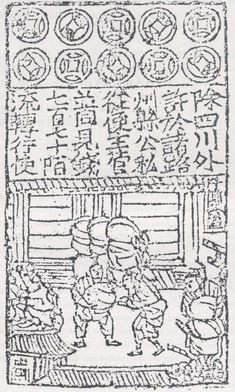
|
The earliest paper money was invented in China during the 10th cenury. Unfortunately, no examples of this paper money exist today.
Ghengis Khan was instrumental in the spread of paper money as currency. Ghengis Khan was intrigued with the paper money he discovered when he conquered China in the 13th Century. He used paper money as a uniform currency across his vast empire. He seized everyone's gold and silver, giving back paper money in return. He made rejecting the paper money a capital offense. Ghengis Khan's actions gave the government a monopoly on precious metals and left the population with no choice but to use his issued paper money as currency. Marco Polo noted in 1304, "...All the grand Khan's subjects receive this paper money without hesitation, because, wherever their business may call them, they can dispose of it again in the purchase of merchandise they have occasion for..." .
| | | |
| | | | | |
|
| | |  | Paper Money in Europe |
| | | | Paper money was adopted in Europe much later than in Asia and the Arab world -- primarily because Europe didn't have paper. The first papermill in Europe was established by the Moors in 1151 A.D. in what is now Spain, but paper was not widely accepted because of religious prejudice. Official Christian officials discouraged paper because it was introduced by the heathen Moors. In 1221, the Holy Roman Emperor Frederick II announced that official documents written on paper were invalid -- only parchment or vellum were acceptable. Nevertheless, the use of paper spread because of its obvious convenience.
Once paper was available, people began leaving their heavy coins with merchants in exchange for handwritten receipts. The note illustrated on the left was issued by a Norwegian merchant in exchange for coins in 1695. The merchant used the coins to fund his business. |
| | | | | |
Bank Notes
|  | | |
|
Beginning in the 11th century, European governments took over from local merchants and began printing paper money that served as official money. To make the system simpler, the paper receipts were given fixed values. The paper note shown on the right was issued by the Swedish Stockholm Bank in 1661 -- the first bank in Europe to issue printed money.
| | | |
| | | | | |
|
| | |  | Early U.S. Money |
| | | | This is an example of early continental currency, issued by the U.S. colonists when they first broke from Britain. The colonists financed the Revolutionary War with paper dollars issued by the Continental Congress. |
|
|
|
Fun Facts About Money
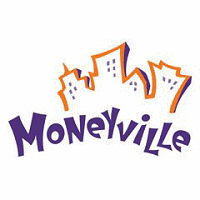 The History of Money The History of Money
- Cattle are probably the oldest of all forms of money. Cattle as money dates back to 9000 B.C. Some cattle were still used as money in parts of Africa in the middle of the 20th century.
- The first coins, pieces of bronze shaped like cattle, appeared around 2000 B.C. Their value was determined by their weight, making their use cumbersome.
- Coins with their value imprinted on them were first produced in Lydia (present day Turkey) around 650 B.C.
- Chinese invented paper currency, there are many views about the exact date of origin, one is around A.D. 806.
- The first consistent use of paper money in Europe was by the French in the 18th century.
- The Massachusetts Bay Colony issued the first paper money in America in 1690. The colonies would later form the United States.
- On April 2, 1792, Congress created the U. S. Mint. A month later, land was purchased for its construction in Philadelphia, which was then the nation’s capital.
- The U.S. Mint produced its first circulating coins -- 11,178 copper cents -- in March 1793. Soon after, the mint began issuing gold and silver coins.
Funny Money
- The early paper money in China around A.D. 806 was called "flying money", as it was used for long distance exchange, and it was both convenient for official tax and private trading without the cumbersome metal coins.
- Before the days of paper money, Americans traded animal skins, including deer and elk bucks, for goods and services. Hence the word "buck" to describe money.
- American Indians used to carry around strings of clamshells to use as money, which they called wampum. Wampum was the most common form of money in North America. By 1637, the Massachusetts Bay Colony declared wampum legal tender, which meant it could be used as money.
- What happens if your money gets trashed? The Office of Currency Standards will replace it if you can present to officials 51 percent of the note. If your cash has been burned, torn or otherwise destroyed, they will help you verify and replace that money. The office once received a shotgun in which a man had hidden some money, but forgot and fired the gun. In another case, a farmer sent his cow’s stomach stuffed with money.
- In 1916, you could get your money laundered for free! If your money was in good enough shape, you could take it to Washington, D.C., where it could be washed, ironed and reissued.
- Parker Brothers printed more money for its Monopoly games than the Federal Reserve has issued in real money for the United States. If you stacked up all the Monopoly sets made, the pile would be more than 1,100 miles high.
Money is Art!
- The early paper money's advent in China was due to the achievements in printing, and in return, the developments of paper money printing brought the early advent of muti-color and color printing.
- The pyramid you see on the back of your currency is actually the reverse side of the Great Seal of the United States. The pyramid represents strength and permanence and has been left unfinished to signify the future growth of the country.
- Contrary to popular belief, the automobile pictured on the back of the $10 note is not a Model T Ford. It is a drawing by the person who designed the bill.
- The vignette on the back of the $100 note is Independence Hall in Philadelphia. There are three people depicted in the engraving. A man and a woman are in front of the hall close to the building; the third person is a man pictured looking toward the building.
- The hands of the clock on the back of the $100 bill are set at approximately 4:10. Although the time is not readily identifiable to the naked eye, it can be seen when examined with 20-fold magnification. There are no records explaining why that particular time was chosen.
- During the Civil War, the Bureau of Engraving and Printing was called upon to print paper notes in denominations of 3 cents, 5 cents, 10 cents, 25 cents and 50 cents. The reason for this is that people hoarded coins, which created a drastic shortage. These bills, called greenbacks, were used to pay Civil War soldiers.
- Martha Washington is the only woman whose portrait has appeared on a U.S. currency note. It appeared on the face of the $1 Silver Certificate of 1886 and 1891, and the back of the $1 Silver Certificate of 1896. There have not been any women featured on U.S. paper currency in the entire 20th century.
Amazing Facts
- The copper coin production in the chinese Song Dynasty reached the highest output, once within a period, 10000 tons of copper a year were used, if line up the coins one by one, it is 128333 kilometers, about 3 circles round the earth, this was only one year's output, no one knows where so much copper were collected.
- The formal official use of paper money in China has been around 1000 years, the longest in the world, consistent overall, althoug there were intermittences.
- If you had 10 billion $1 notes and spent one every second of every day, it would require 317 years for you to go broke.
- There is about $823 in circulation for each person in America.
- A piece of currency can be folded forward and back 4,000 times before it will tear.
- The $100 note has been the largest denomination of currency in circulation since 1969. The largest bill ever printed was the $100,000 bill; it was actually a Gold Certificate issued in 1934. These notes were used for transactions between Federal Reserve banks and were not circulated among the general public. President Woodrow Wilson was depicted on the bill.
Making Money
- Records shows china had ways to avoid counterfeited paper money nearly 1000 years ago, and laws for that were also published then, even printed on the paper money.
- U.S. paper currency is made of 25 percent linen and 75 percent cotton paper. Red and blue synthetic fibers of various lengths are distributed evenly throughout the paper. Prior to World War I, the fibers were made of silk.
- During fiscal year 1999, it cost the Bureau of Printing and Engraving approximately 4.2 cents per note to produce $11.3 billion U.S. paper currency notes. Ninety-five percent of the notes printed each year are used to replace those already in circulation. Forty-five percent of the notes printed are $1 bills.
- In 2002, the U.S. Mint produced 14,413,236,610 coins for general circulation.
- The United States Secret Service was originated in 1865 to combat counterfeit money. At the time, as much as one third of all the money in the United States was estimated to be counterfeit. Currently, about $250,000 in counterfeit money appears each day.
- One of the ways the Federal Reserve detects counterfeit bills is to check the iron content of the ink.
|



The following websites were referenced in researching this book:
www.numismatica.com
www.wikipedia.org
www.about.com
 The History of Money
The History of Money


